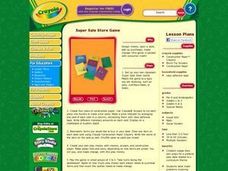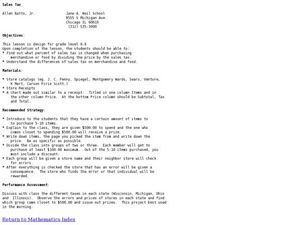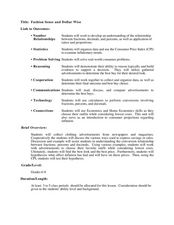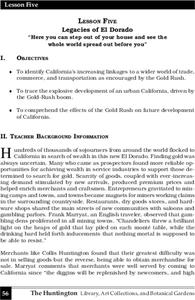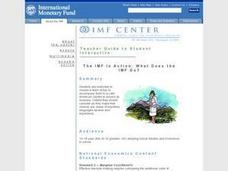Curated OER
It's On Sale
First graders read the book The Great Pet Sale to learn about economics and advertisements. In this economics lesson plan, 1st graders read the book The Great Pet Sale and define related vocabulary words. Students compare prices to find...
Curated OER
Super Sale Store Game
Students help their teacher set up their classroom in the form of a store. Using construction paper, they make different amounts of paper money and items to buy. To end the lesson, they play the game to practice making change and adding...
Curated OER
What's on Sale?
Learners explore sale items. In this money and percent math lesson, students work in groups to locate food ads in the newspaper. Learners identify sales and calculate final prices using percentage discounts. Students complete a math...
Curated OER
Sales Tax
Students explore the concept of sales tax. For this sales tax lesson, students work in groups to spend $500. Students calculate the discount and sales tax on each item. Students buy between 5 to 10 items.
Curated OER
For Sale!
Young scholars give an oral presentation. In this Spanish instructional activity, students work in groups to describe a house for sale using Spanish. Young scholars use a digital camera to take pictures of their house and create a...
Radford University
Build-a-Toy
Don't toy with using a fun lesson. Scholars design new toys and then create scale drawings. They determine the volume and surface area of the toys, and then research prices of raw materials to estimate the manufacturing costs.
Curated OER
Purchasing Flower Power
Students fabricate decorative flowers to serve as a sales commodity. They assign value and prices to their flower stems. Students estimate and calculate costs using decimal points and place values in order to keep within a budget they...
Curated OER
Percents: What's the Use?
Students explore percentages in real world situations. In this percents lesson plan, students determine the final sales price after discounts. Students interview community members and determine how percentages are used in the real world.
Practical Money Skills
Shopping Wisely
Work on making good shopping choices with a fun economics project. Kids analyze the differences between brand names and generic products, bigger and smaller units for purchase, and different places they can shop for different items.
Curated OER
Furnishing an Apartment
Students explore the components that comprise the formation of a budget. Sales brochures advertising apartment furnishings are used to assist students in this task.
Curated OER
Create A Business and A Life
Young scholars look through a phone book and pick a business they think they would enjoy. They brainstorm ideas about the needs of a business. They set their prices to payback their investment into the new business.
Curated OER
Fashion Sense and Dollar Wise
Students work in groups to show understanding of the relationship between fractions, decimals, percentages, and the application of ratios and proportions. In this decimals, fractions, and percents lesson, students use real life consumer...
Curated OER
Percents: What's the Use
Young scholars research percentages in real world situations. In this percents lesson, students demonstrate their ability to apply percents to everyday situations. Young scholars communicate mathematically by conducting interviews about...
Curated OER
When Life Serves You Lemons!
Students build their own lemonade stand. In this problem solving lesson, students measure the materials needed to build a stand and make lemonade. They find the cost of producing the lemonade and the profit they will make.
Curated OER
Legacies of El Dorado
Students explore the development of urban California as it was driven by the Gold Rush boom. They study historical documents and participate in a variety of hands-on activities designed to reinforce the concept of the lesson.
Curated OER
Connections: Peddling Petals
Students identify various patterns. In this patterns instructional activity, students assemble paper flowers by using patterns. Students discuss how they constructed their flower.
Curated OER
Oil Market Basics
Students explore the global oil market through a web-quest. In this oil market lesson, students conduct a web-quest to gather information related to the global oil market then design and make a mural.
Curated OER
Let's Try Various Calculations
Students explore math facts. In this calculation and math facts instructional activity, students play a board game in which addition, subtraction, multiplication, and division math facts are practiced. A copy of the game is included.
Curated OER
The IMF in Action: What Does the IMF Do?
Students use newspapers and the internet to discover what the IMF does. They work together in groups to brainstorm occupations which need another language to be spoken. They also examine data related to trading among countries.
Curated OER
Sadorus Photograph Collection Activity: Analysis of an Historical Photograph
Students retrive social, cultural, and historical information from a photograph by analyzing the contents. Data about the subject's culture, people, events, and place is explored.
Curated OER
BY THE POUND
The student will estimate the weight and cost of produce and calculate the actual price.Discuss the difference between weight and volume. Have students discuss whether it is more economical to buy produce by the pound, by the piece or...



